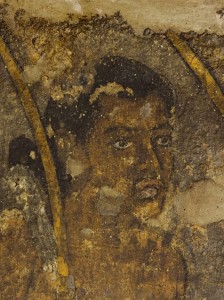 |
| Photograph: Prasad Pawar |
According to author and writer, William Dalrymple, the restored paintings on the Ajanta cave walls in Maharashtra, western India are, "possibly the finest surviving picture galleries from the ancient world."
Restoration of the paintings in Cave #10 began in 1999 using infrared light, micro-emulsion and "cutting-edge Japanese conservation technology."
In a story for the Guardian called "The Ajanta Cave Murals: 'Nothing Less Than the Birth of Indian Art,' " Dalrymple reports that archaeologists "succeeded in removing 75% of the layers of shellac, hard soot and grime from 10 sq m of the murals."
Here are some interesting facts about the murals that come from the story.
- 31 caves make up the Ajanta Caves
- The paintings tell Jakarta stories which are stories about the earlier lives of the Buddha.
- Cave#10, the one that was restored and about which Dalrymple writes, dates to about the 1st or 2nd century CE, while most of the others date 600 years later.
- The paintings, Dalrymple notes, "open a window on to an age about which we know little."
- The turbans, for example, seem to denote rank and status.
- And artistic techniques suggest a Hellenistic influence.
The murals of Ajanta are now recognised as some of the greatest art produced by humankind in any century, as well as the finest picture gallery to survive from any ancient civilisation. Even today, the colours glow with a brilliant intensity: topaz-dark, lizard green, lotus-blue.
No comments:
Post a Comment